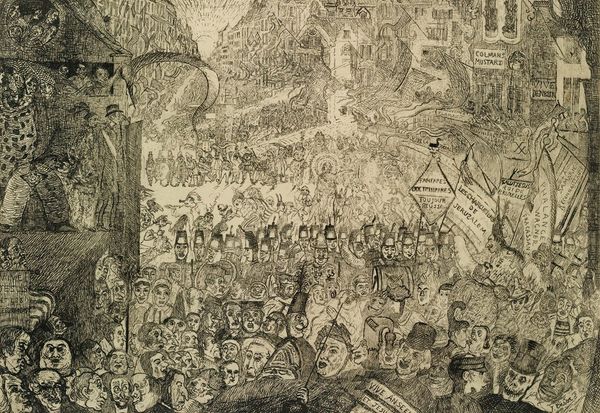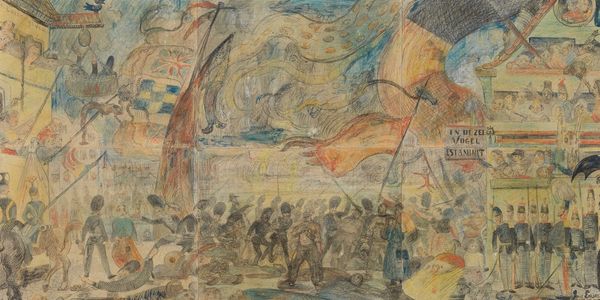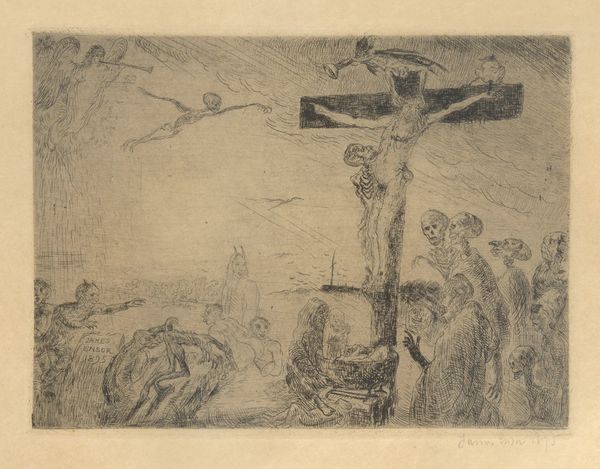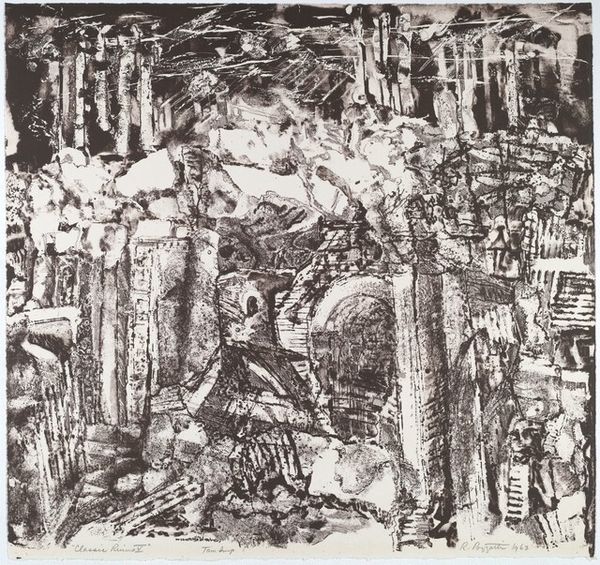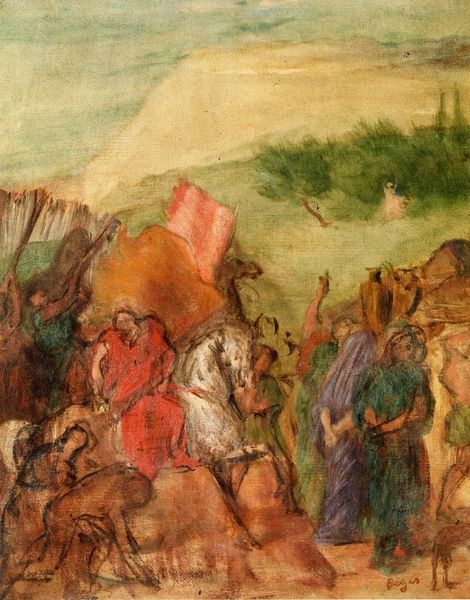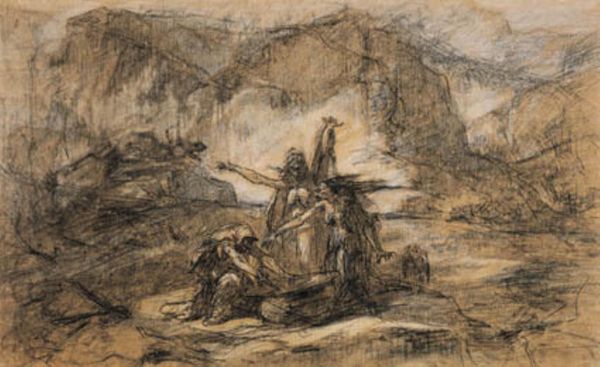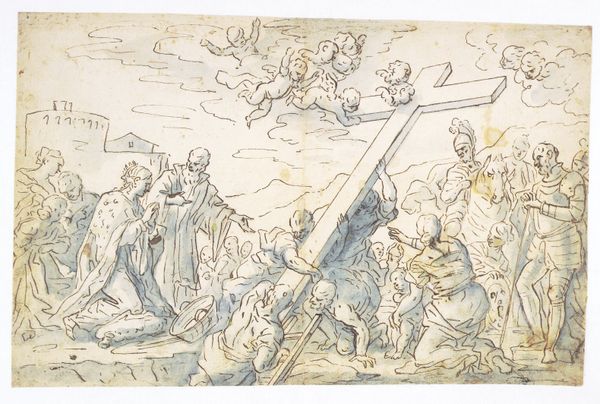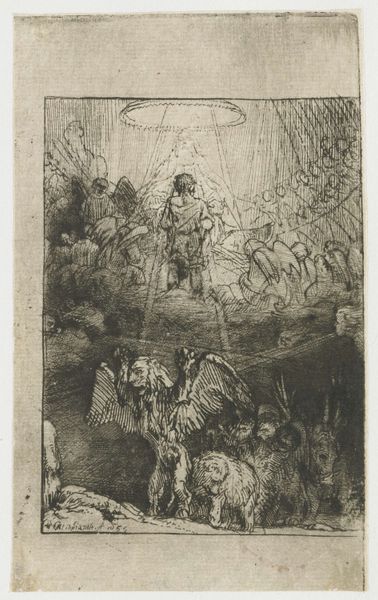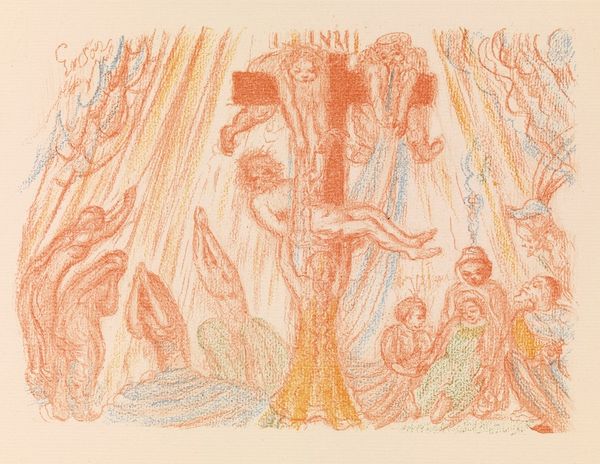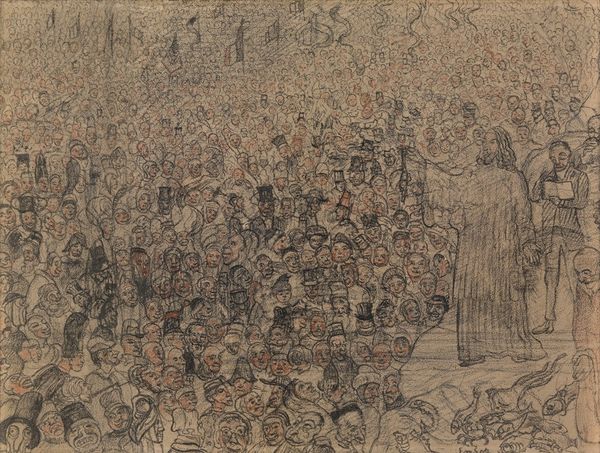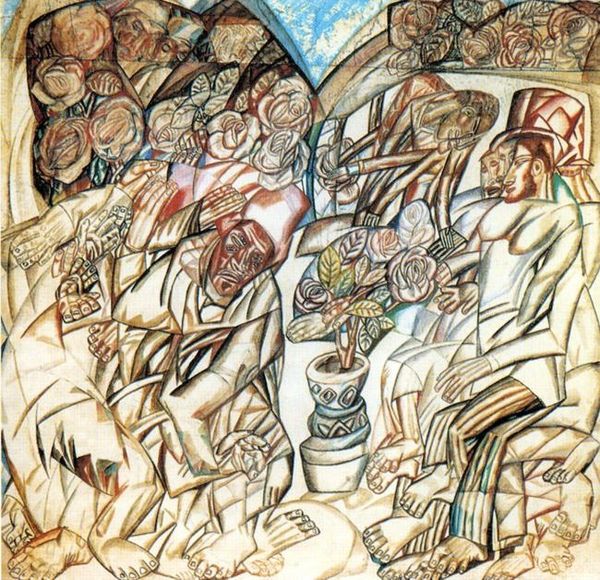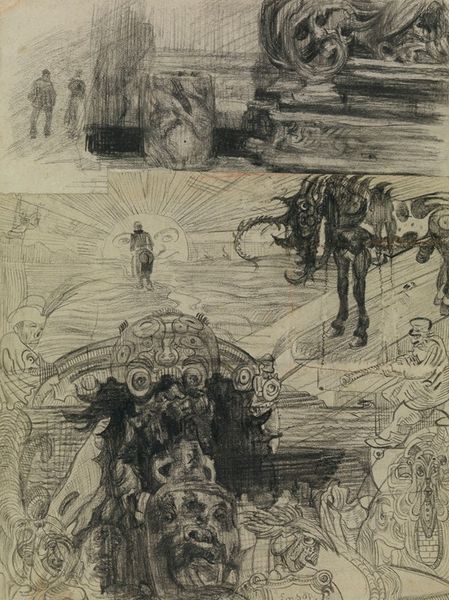
Copyright: Public domain
James Ensor's drawing, Calvary, places the viewer amidst a scene of profound historical and religious significance. Here we observe the crucifixion, an event laden with symbols of sacrifice, redemption, and suffering. The cross itself, the most prominent symbol, evolved from ancient roots predating Christianity, representing cosmic axes and points of intersection between the divine and mortal realms. In Ensor’s rendition, the figure on the central cross bears the artist’s name, a bold statement that infuses personal identity with universal suffering. The grotesque masks and faces in the crowd around the crosses serve to create a stark contrast that amplify the scene's emotional tension. The motif of crucifixion has recurred throughout art history, from Byzantine icons to Renaissance masterpieces, each age imbuing it with new layers of meaning, reflecting the evolving collective psyche. Ensor's work taps into the deeply ingrained human fascination with suffering and salvation, engaging us on a visceral level. It speaks to the cyclical nature of these symbols, their continuous re-emergence and transformation, and the enduring human quest for meaning.
Comments
No comments
Be the first to comment and join the conversation on the ultimate creative platform.

